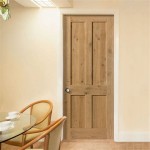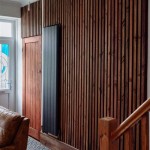Selecting the Optimal Paint Finish for Interior Doors, Trim, and Exterior Elements
Choosing the correct paint finish for interior doors, trim, and exterior elements is crucial for both aesthetic appeal and long-term durability. The finish impacts the sheen, scratch resistance, cleanability, and overall longevity of the painted surface. This article provides a comprehensive guide to understanding different paint finishes and selecting the most appropriate option for specific applications.
Understanding Paint Finish Terminology
Paint finishes are typically categorized based on their sheen level, which refers to the amount of light reflected off the painted surface. Sheen levels range from matte (least reflective) to high-gloss (most reflective). It is essential to grasp the nuances of each finish type to make informed decisions regarding their suitability for various surfaces.
Matte Finish: Matte finishes possess the lowest sheen level, absorbing most of the light that strikes the surface. This results in a flat, non-reflective appearance. Matte paints are adept at concealing imperfections on walls and ceilings, making them a popular choice for areas where a smooth, uniform look is desired.
Eggshell Finish: Eggshell finishes exhibit a slightly higher sheen level than matte, resembling the subtle luster of an eggshell. This finish offers improved durability and cleanability compared to matte, while still maintaining a relatively low reflectivity.
Satin Finish: Satin finishes provide a noticeable sheen level, offering a balance between durability and aesthetics. They are more resistant to scratches and scuffs than matte or eggshell finishes, making them a practical choice for high-traffic areas.
Semi-Gloss Finish: Semi-gloss finishes possess a moderately high sheen level, reflecting a significant amount of light. This finish is highly durable and easy to clean, making it ideal for surfaces that are frequently exposed to moisture and dirt.
Gloss Finish: Gloss finishes exhibit the highest sheen level, producing a highly reflective, almost mirror-like surface. Gloss paints are extremely durable and resistant to stains and mildew, making them suitable for demanding environments. However, their high reflectivity can accentuate imperfections on the surface.
Selecting the Right Finish for Interior Doors and Trim
Choosing the appropriate paint finish for interior doors and trim involves considering factors such as traffic levels, potential for moisture exposure, and desired aesthetic. Different areas of the house may require different finishes to optimize both appearance and performance.
Doors: Interior doors, particularly those in high-traffic areas such as hallways and entryways, benefit from durable and easy-to-clean finishes. Semi-gloss or satin finishes are often recommended for doors due to their resistance to scuffs, fingerprints, and general wear and tear. These finishes allow for easy cleaning with a damp cloth, maintaining a clean and polished appearance.
Trim (Baseboards, Door Frames, Window Casings): Trim elements are susceptible to impacts and scuffs, making durability a key consideration. Semi-gloss or satin finishes are commonly used on trim for their ability to withstand daily wear and tear while providing a subtle sheen that complements the overall design. The slightly higher sheen also enhances the details of the trim, creating a more visually appealing effect. Alternatively, some homeowners opt for a gloss finish on trim for a more dramatic and eye-catching look. However, it is important to ensure that the trim surface is perfectly smooth, as gloss finishes can accentuate any imperfections.
Considerations for Bathrooms and Kitchens: In bathrooms and kitchens, where moisture and humidity levels are elevated, it is essential to choose a finish that resists mildew and is easy to clean. Semi-gloss is a popular choice for these areas due to its moisture resistance and ability to withstand frequent cleaning. For kitchen cabinets, a satin or semi-gloss finish is frequently used to provide durability and ease of cleaning.
Matching Finishes: Maintaining a consistent sheen level throughout a room can contribute to a cohesive and polished look. For example, if the walls are painted with an eggshell finish, consider using a satin finish on the trim to create a subtle contrast that enhances the architectural details without being overly jarring.
Selecting the Right Finish for Exterior Elements
Exterior paint finishes face a unique set of challenges due to exposure to the elements, including sunlight, rain, and temperature fluctuations. Choosing the correct finish is critical for ensuring long-term protection and maintaining the aesthetic appeal of the exterior surfaces.
Siding: The choice of finish for siding depends on the material of the siding and the desired aesthetic. For wood siding, satin or semi-gloss finishes are often recommended for their durability and ability to resist moisture penetration. These finishes also provide a moderate level of sheen that enhances the color and texture of the wood. For vinyl siding, a low-luster or matte finish is typically preferred to minimize glare and create a more natural look. It is crucial to select a paint specifically formulated for vinyl siding to ensure proper adhesion and prevent warping or cracking.
Trim (Fascia, Soffits, Gutters): Exterior trim elements, such as fascia, soffits, and gutters, are exposed to significant moisture and UV radiation. Semi-gloss or gloss finishes are often used on these surfaces for their superior durability and resistance to weathering. These finishes offer excellent protection against water damage and mildew growth, helping to maintain the integrity of the trim over time. The higher sheen levels also make it easier to clean these areas, removing dirt and debris that can accumulate over time.
Doors: Exterior doors require a durable and weather-resistant finish to withstand the elements. Semi-gloss or gloss finishes are commonly used on exterior doors for their ability to repel water and resist fading from sunlight. These finishes also provide a smooth, easy-to-clean surface that can withstand frequent use. In addition, consider using a paint with UV inhibitors to prevent the color from fading over time.
Decks and Porches: For decks and porches, a specialized deck stain or paint is essential to provide protection against moisture, UV radiation, and foot traffic. These products are typically available in a variety of finishes, ranging from matte to semi-gloss, depending on the desired aesthetic and level of protection. It is important to follow the manufacturer's instructions carefully when applying deck stains or paints to ensure proper adhesion and long-term durability.
Surface Preparation: Proper surface preparation is crucial for achieving a long-lasting and professional-looking paint job on exterior surfaces. This includes cleaning the surface thoroughly to remove dirt, mildew, and loose paint. Repairing any damaged areas, such as cracks or holes, is also essential. Priming the surface before painting can improve adhesion and provide a more uniform finish.
Key Considerations for Paint Selection
Beyond the sheen level, several other factors should be considered when selecting paint for interior doors, trim, and exterior elements. These factors include the type of paint (latex or oil-based), the quality of the paint, and the specific requirements of the project.
Paint Type (Latex vs. Oil-Based): Latex paints are water-based and offer several advantages over oil-based paints, including lower VOCs (volatile organic compounds), faster drying times, and easier cleanup. Latex paints are also more flexible than oil-based paints, making them less likely to crack or peel over time. Oil-based paints, on the other hand, offer superior durability and adhesion, making them a good choice for high-traffic areas or surfaces that require extra protection. However, oil-based paints require mineral spirits for cleanup and tend to yellow over time. For most interior applications, latex paints are generally preferred due to their ease of use and environmental friendliness. For exterior applications, both latex and oil-based paints can be used, depending on the specific requirements of the project.
Paint Quality: Investing in high-quality paint can significantly improve the appearance and longevity of the painted surfaces. High-quality paints typically contain more pigments and binders, resulting in better coverage, durability, and resistance to fading. While high-quality paints may cost more upfront, they can save money in the long run by requiring fewer coats and lasting longer. When selecting paint, look for products that are specifically formulated for the intended application (e.g., interior doors, exterior siding) and that have a good reputation for performance.
Color Selection: Color selection is a subjective aspect of painting, but it is important to consider the overall design of the space and the desired mood. Lighter colors can make a room feel larger and more airy, while darker colors can create a more intimate and cozy atmosphere. It is also important to consider the existing colors in the room and choose a paint color that complements the overall scheme. When selecting exterior paint colors, consider the architectural style of the house and the surrounding landscape. Neutral colors are often a safe choice for exterior applications, but bold colors can also be used to create a unique and eye-catching look. Always test paint colors in the actual lighting conditions before committing to a final decision.
By carefully considering these factors, homeowners and professionals can select the optimal paint finish for interior doors, trim, and exterior elements, ensuring both aesthetic appeal and long-term performance.

Interior Doors Door Trim Paint At Com

How To Paint A Door Without Brush Marks Hana S Happy Home
The Best Paint Finish For Walls Ceilings Trims Doors More Kylie M Interiors

Best Paint For Trim And Interior Doors Aboff S

Pretty Interior Door Paint Colors To Inspire You

Best Paint For Interior Doors Finish Types Compositions

How To Paint A Fiberglass Door Best Kind Of Use Amanda Katherine

How To Choose The Best Paint Finishes For Interior Walls Simply Diy Home

How To Paint Doors Best Practices S Brands Paintwell

Behr Premium 1 Gal Pwn 10 Decorator White Semi Gloss Enamel Interior Exterior Cabinet Door Trim Paint 712001 The Home Depot
Related Posts








